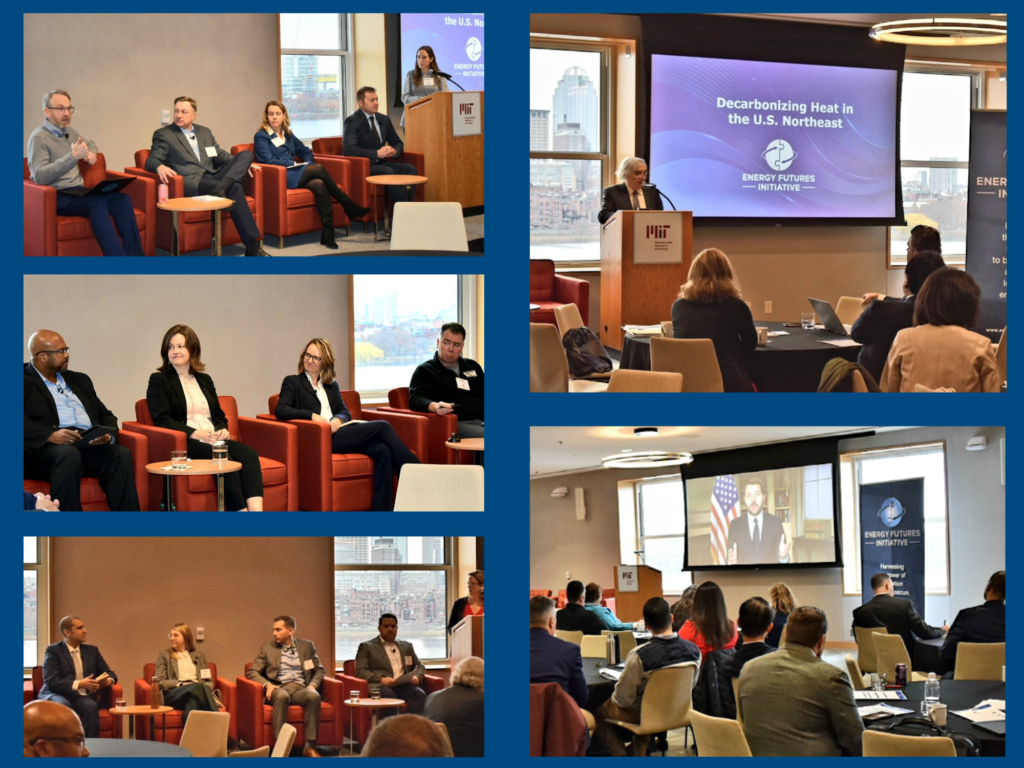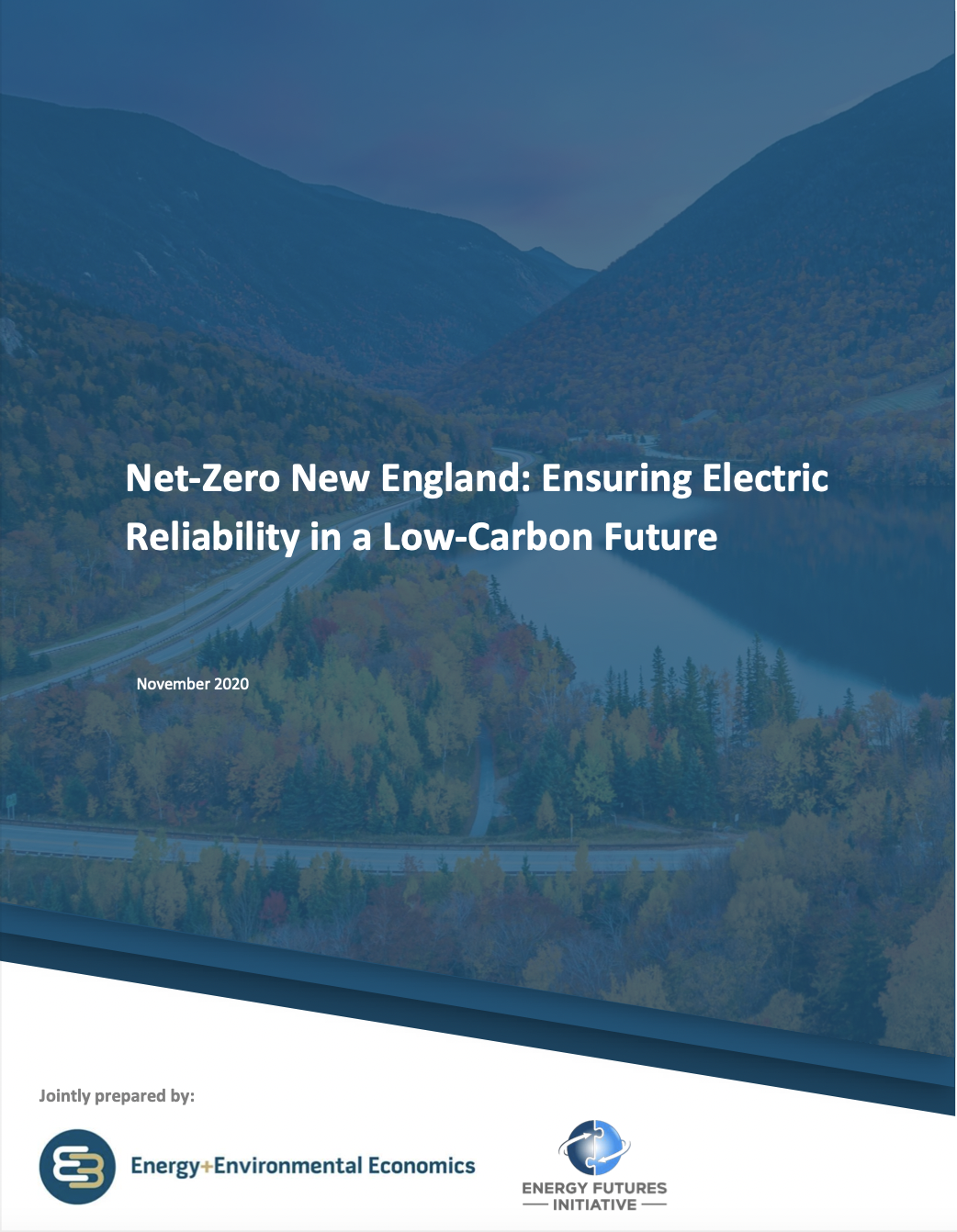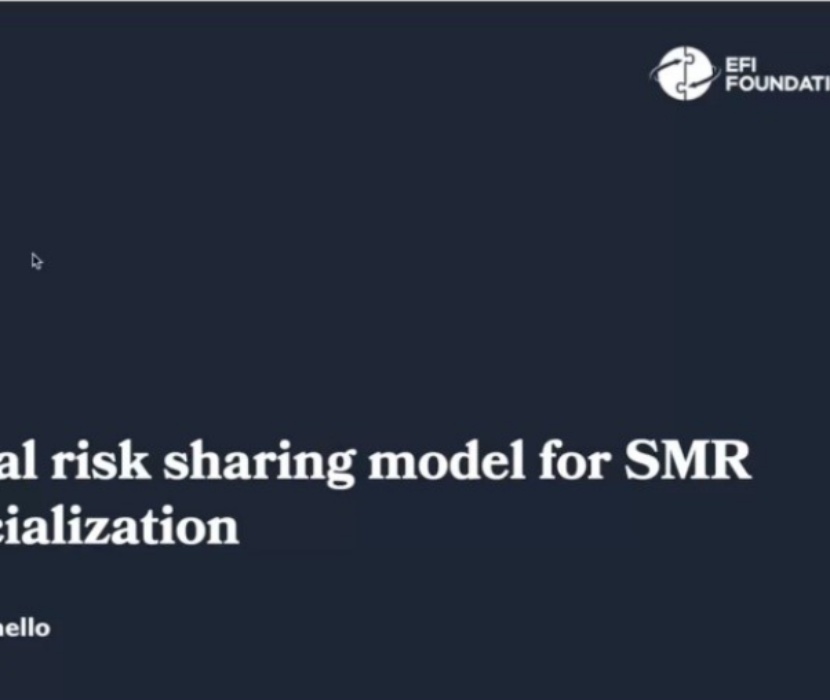
The transition to a low-carbon energy future relies on regional decarbonization approaches—the U.S. Northeast is no exception.
Eight Northeast states have a goal of an 80 percent reduction in economy-wide greenhouse gas emissions by midcentury. The region must decarbonize its heating to achieve this goal, and that requires overcoming challenges brought on by the Northeast’s dense demography and built environment. Heating decarbonization was the focal point of the Energy Futures Initiative’s (EFI’s) workshop, “Decarbonizing Heat in the U.S. Northeast,” on December 6, 2022, at the Massachusetts Institute of Technology (MIT) in Cambridge, Massachusetts.
EFI Senior Vice President of Research Alex Kizer explained that heating in the Northeast is hard-to-decarbonize in the way that heavy industry is hard-to-decarbonize.
“Reliable and cost-effective heating for water and space is a critical infrastructure,” Kizer said. “It comes into stark focus when we think about the hospitals, homes, and factories [in the Northeast] that must provide heat during the long periods of various weather conditions, including harsh winters.”
In addition to the Northeast’s infrastructure, its natural conditions (forests and protected lands), economy, resource availability, and history are factors that affect regional decarbonization, Kizer said.
In order to effectively decarbonize the Northeast, electrification and the adoption of a clean fuel are necessary. The workshop explored clean hydrogen and renewable natural gas (RNG) as potential clean fuels to lower greenhouse gas emissions in the region.
The effect of a new “American industrial policy” on the U.S. Northeast
13th Director of the National Economic Council Brian Deese explained that historic policy investment—the Bipartisan Infrastructure Law (BIL), Inflation Reduction Act (IRA), and CHIPS and Science Act—is paving the way for a modern American industrial policy that will affect the Northeast’s pathway to emissions reductions.
Clean hydrogen is one of the technologies targeted by recent federal investments in clean energy. Federal incentives for the regional development of clean hydrogen focus on its potential as a clean fuel to progress decarbonization in the Northeast.
“Eight [hydrogen] hubs around the country will build regional networks, bringing together producers, consumers, distributors, and users to do demonstration projects at scale… [with the potential to] produce 10 million metric tons of clean hydrogen per year by 2030,” Deese said. He further noted that clean hydrogen could account for 14 percent of U.S. energy demand by 2050.
The slew of investments in clean energy, including clean hydrogen, will undoubtedly affect the Northeast and other regions across the United States as they decarbonize. During the workshop, three panels explored decarbonization challenges in the Northeast within the context of recent federal legislation.
Evaluating the role of low-carbon fuel in the U.S. Northeast
An initial discussion—between panelists Erin Blanton (GTI Energy), Tory Clark (Energy and Environmental Economics), Ben Miller (Guidehouse), Emre Gençer (MIT Energy Initiative), and Peter Narbatiz (ICF)—delved into the role of low-carbon fuels in the Northeast’s decarbonization transition.
Many panelists expressed the need for a diversified approach to emissions reductions, one in which both electrification and low-carbon fuels can serve an important role. “The modeling all shows that if you go 100 percent in one direction or 100 percent in another direction, you end up increasing costs across society for all actors [and] all players,” said Miller, who is associate director of sustainability at Guidehouse in the Boston area.
In fact, Gençer (principal research scientist at MIT Energy Initiative) explained that electrification alone is insufficient to meet the transportation and heating needs in the Northeast—fuel is necessary. “The discussion is how we will use electricity and hydrogen, in tandem, to meet all of the energy demands of different sectors,” Gençer said.
The use of electrification and low-carbon fuels will vary across sectors and applications, with low-carbon fuels most important for areas—high-temperature industries and buildings especially—that are challenging and expensive to decarbonize, explained Clark, who is a senior director at Energy and Environmental Economics. She said since most of the residential and commercial buildings that will exist by midcentury are already built, retrofitting buildings in the most cost-effective and least intrusive way possible for customers will be a challenge.
During the discussion, panelists cited hybrid systems as a means of optimizing decarbonization while lowering energy transition costs. However, they noted that modeling is based on assumptions, not real-world data; knowing how solutions work in practice is important for guiding decarbonization, Miller underscored.
Demonstration and pilot projects are the next step for low-carbon fuels like clean hydrogen, especially with federal investment from the IRA and BIL, Clark said. Several panelists referred to the IRA’s hydrogen production tax credit as a “game changer” for clean hydrogen, though perhaps not in the Northeast region.
While panelists debated the extent of clean hydrogen’s role in the Northeast as a clean fuel, they agreed it will likely have one. A “hybrid mix” of electrification and low-carbon fuels is most essential for regional decarbonization when considering total resource cost, customer costs, customer bills, customer rates, workforce transition, and equity issues, Clark said.
Local community involvement in U.S. Northeast decarbonization
Since heating in the Northeast affects utility customers, community engagement with those customers is necessary to take the right steps toward decarbonization. The second panel—consisting of Sarah Jackson (The Nature Conservancy), Kerry Bowie (Browning the Green Space), Alex MacLean (Leonine Public Affairs), John Buonopane (United Steelworkers), and moderator Jason Beckfield (Harvard University)—explored how to enlist communities in regional decarbonization.
“The words ‘energy transition’ can be scary [for individuals and communities],” said Buonopane, a staff representative at United Steelworkers.
Panelists underscored that relationship-building between communities and project developers must be relational, not transactional, to create meaningful partnerships as technologies like clean hydrogen and electrification are implemented. “Relationships are built on…trust, communications, [and] mutual respect,” explained Bowie, who serves as managing director and president at Browning the Green Space.
MacLean (Leonine Public Affairs) said that to form a partnership, industry must trust the community, and the community must also trust industry.
Jackson (The Nature Conservancy’s climate and energy policy manager for the Northeast) further noted that the way industry engages with communities is essential—they must explain abstract concepts about clean energy and their implications early. MacLean echoed these sentiments, noting the importance of proactivity when it comes to community engagement. She also said community leaders can be a vital resource because they can share community knowledge and shape the narrative of the clean energy transition. Jackson added that communities are “local experts” that can help inform the energy transition by guiding industry toward the best available options.
Panelists pointed to the benefits—and need—for community engagement in the energy transition broadly, as well as for specific clean hydrogen and electrification projects in the Northeast specifically. Community perspectives are key given that consumers will be largely impacted by the decarbonization of heating in the region.
Policies to foster low-carbon fuels supply and demand
In the final workshop session, four panelists—Judith Johnson (National Grid), Bill Akley (Eversource Energy), Patrick Woodcock (Massachusetts Department of Energy Resources Commissioner), and Peter McPhee (Massachusetts Clean Energy Center)—with moderator Madeline Schomburg, turned to policies that could develop low-carbon fuels in the Northeast. The discussion echoed a running theme throughout the workshop: the need for an all-of-the-above approach to overcome the energy transition’s challenges.
Federal policies, like the IRA, are a key message for states and the nation about the energy transition, explained McPhee, a senior program director at Massachusetts Clean Energy Center. He said these investments are helping to launch industries in a way that would not otherwise be possible.
The IRA and BIL are accelerating the scale and pace of decarbonization; for example, the IRA’s tax incentives can help lower costs to reach parity with natural gas, which propels supply and demand, explained Johnson, who is head of U.S. strategy and head of hydrogen at National Grid. The legislation is also expansive, meaning they encompass a range of technologies like clean hydrogen, RNG, solar, and more.
The panelists agreed that a technology-neutral, agnostic approach to policy is best because it is too soon to gauge “winners” in clean energy technology. They also said additional action is necessary to answer the many questions about regulatory structures, standards, permitting, and siting that exist in the Northeast and U.S. broadly.
EFI CEO Ernest Moniz closed the workshop by stressing the importance of moving at scale and speed when it comes to decarbonization. He noted that there is no “silver bullet” for lowering emissions, but that many components are necessary in the Northeast and elsewhere.
— Jaycee Scanlon, Communications Fellow
Supplemental Material
Related Content
(Share this post with others.)





